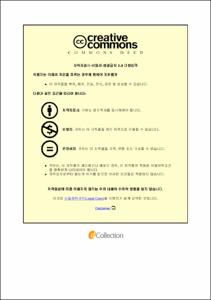뇌졸중 랫드 모델을 이용한 3-Tesla 자기공명영상검사에서 아미드수소이동 영상기법의 포화시간 최적화
- Abstract
- 연구목적
뇌졸중 랫드 모델을 이용한 3-Tesla 자기공명영상검사에서 아미드 수소 이동 (Amide proton transfer, APT) 영상 기법에서 포화 시간을 최적화하여 정상 및 허혈성 뇌 영역 간의 pH 가중치의 차이를 극대화 하고자 한다.
대상 및 방법
중간대뇌동맥이 폐쇄된 3마리의 수컷 Wistar랫드를 사용하여 3-Tesla 자기공명영상검사를 시행하였다. APT영상 획득은 32채널 헤드 코일과 2채널 병렬 라디오 주파수 전송을 사용하여 3차원 터보스핀에코 기법으로 획득하였다. 2채널 병렬 전송을 사용하여 B1 진폭 1.2μT에서 Sinc-Gauss펄스로 off-resonance RF 펄스를 가했다. 포화 시간은 3, 4, 5초로 실험하였으며 APT효과는 물 공명(APT-weighted signal)에 대한 3.5 ppm의 자화전이율(Magnetization-transfer-ratio, MTR)비대칭을 사용하여 정량화하고, 정상 및 허혈 영역과 비교 하였다. 타당성을 평가하기 위하여 급성 뇌졸중 환자에게 적용하였다.
연구결과
3, 4, 5 초 프로토콜로 허혈 부위를 시각적으로 검출 할 수 있었다. 그 중 1.2μT의 출력의 4초의 포화시간에서 APT-weighted signal은 정상 영역과 허혈 영역 사이의 최대 차이를 보였다. (-0.95 %, P = 0.029) 3초 및 5초의 포화시간의 APT-weighted signal은 각각 -0.9 % 및 -0.7 %였다. 또한 4초의 포화 시간 프로토콜은 급성 뇌졸중 환자에 적용 하였을 때에 pH 가중치 차이를 가장 성공적으로 묘사하였다.
결론
3-Tesla 자기공명영상검사의 터보스핀에코 APT영상에서 1.2μT 출력을 사용할 때 달성되는 최대 pH 가중치 차이는 4초 포화시간 프로토콜이었다. 이 프로토콜은 임상 환경에서 뇌졸중 환자의 pH 가중 차이를 나타내는 데 도움이 될 것으로 사료된다.
중심단어 : 자기공명영상, 아미드수소이동, 급성뇌졸중, 포화시간, pH가중치차이
|Purpose:
The Amide proton transfer(APT) imaging technique of 3-Tesla magnetic resonance imaging using a stroke rat model optimizes the saturation time to maximize the difference in pH weight between normal and ischemic brain regions.
Materials and Methods:
3-Tesla magnetic resonance imaging(MRI) was performed using 3 male Wistar rats with a middle cerebral artery occluded. APT image acquisition was obtained by 3D turbo spin echo technique using 32 channel head coil and 2 channel parallel radio frequency transmission. Off-resonance RF pulses were applied to the Sinc-Gauss pulse at 1.2μT of B1 amplitude using 2-channel parallel transmission. The saturation time was 3, 4, and 5 seconds. The APT effect was quantified using magnetization transfer ratio(MTR) asymmetry of 3.5ppm for APT-weighted signals. To evaluate the feasibility, it was applied to clinical patients with acute stroke.
Results:
The ischemic brain regions was visualized by 3, 4, 5 sec protocol. At a saturation time of 4 seconds with an output of 1.2 μT, the APT-weighted signal showed the maximum difference between ischemic and normal regions.(-0.95%, P = 0.029) The APT-weighted signals at 3 s and 5 s saturation times were -0.9% and -0.7%, respectively. In addition, the 4-second saturation time protocol most successfully depicts the difference in pH weight when applied to acute stroke patients.
Conclusion:
The maximum pH weight difference achieved when 1.2 μT power was used in a Turbo spin echo APT image of a 3-Tesla magnetic resonance imaging scan was a 4 second saturation time protocol. This protocol may help to indicate the pH-weight difference in stroke patients in a clinical setting.
Keywords:
magnetic resonance imaging, amide proton transfer, acute stroke, saturation time, pH weight difference
- Issued Date
- 2018
- Awarded Date
- 2018-08
- Type
- Dissertation
- Affiliation
- 울산대학교
- Department
- 일반대학원 의학과의과학전공
- Advisor
- 도경현
- Degree
- Master
- Publisher
- 울산대학교 일반대학원 의학과의과학전공
- Language
- kor
- Rights
- 울산대학교 논문은 저작권에 의해 보호받습니다.
- Appears in Collections:
- Medical Science > 1. Theses (Master)
Medical Engineering > 1. Theses(Master)
- 파일 목록
-
-
Download
 200000108752.pdf
기타 데이터 / 653.48 kB / Adobe PDF
200000108752.pdf
기타 데이터 / 653.48 kB / Adobe PDF
-
Items in Repository are protected by copyright, with all rights reserved, unless otherwise indicated.